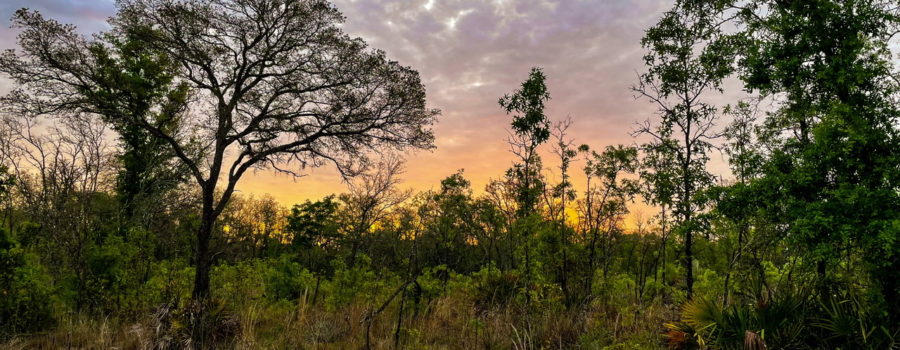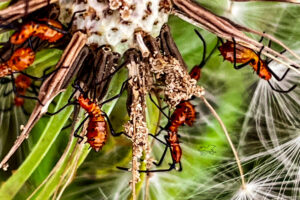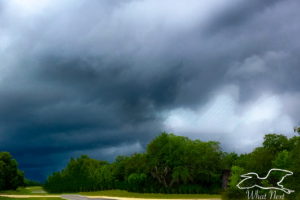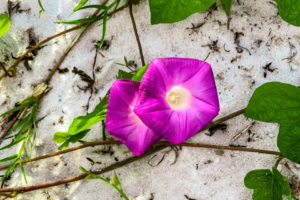The Sandhills are One of Many Amazing Florida Habitats

One of the things that I really enjoy about living in Florida is the diversity of habitats that we have in this state. According to the FNAI (Florida Natural Areas Inventory), there are 81 different habitats within our beautiful state! I certainly haven’t had the opportunity to take photos in all of them yet (eventually I would love to be able to say I have), but I have been to a few. The one where I take the most photos since it’s where I live and work, is the Florida sandhills. The sandhills are characterized by rolling hills that are topped by sands of varying depths. In some spots the sand may get up to 200 feet deep. It is believed that the sandhills were formed by prehistoric oceans increasing and receding as the polar caps melted and refroze. When the oceans receded the last time, the sandhills we’re left behind. Areas of sandhills habitat can only be found in Florida in the northern and central portions of the state.

Sandhills are dominated by an upper story of longleaf pines (Pinus palustris) and turkey oak (Quercus cerris) along with several other scrub oaks. The ground is then covered by a number of hearty herbs and grasses such as wiregrass, sorghastrum, and blackjack (also knows as Beggar’s tick). All of these plants are either capable of surviving in low water conditions or have long root systems that allow them to reach water at varying depths. The entire habitat is very dependent on fire, either accidental or managed, to maintain it. Longleaf pine has a thick fire retardant bark which helps to protect the tree from fire, while turkey oaks will resprout from their unburned roots within a matter of days after a fire. Many of the ground cover plants actually promote fire, but have fire resistant seeds while others are fire resistant or have seeds with awns that allow them to penetrate the sand and remain protected. Fires in the sandhills help to remove invasive species of plants that can take nutrients and sunlight from native plants and also allow other new species to begin to grow. In studies, it’s been shown that new types plant life will continue to grow in the sandhills for up to seven years after a single fire.

Not only is the sandhills habitat important for some of Florida’s most important plants, like the longleaf pine, but it’s also the home of a diverse number of animals that are adapted to the dry, sandy conditions found here. One of the most important, is the gopher tortoise (Gopherus polyphemus), which also just happens to be the Florida state reptile. Gopher tortoises dig burrows that can be anywhere from three to sixty feet long and can go as deep an nine feet. These burrows not only provide shelter for the gopher tortoises, but for hundreds of other sandhills species including rattlesnakes, coral snakes, gopher frogs, burrowing owls, foxes, rabbits, armadillos, and many, many more. Gopher tortoises eat many of the sandhills grasses and berries, which also makes them important in spreading those seeds to other places in the habitat.

Other animals that are common in the sandhills include white tail deer, wild turkeys, grey squirrels, Sherman’s fox squirrels, mourning doves, red tailed hawks, red shouldered hawks, Northern cardinals, blue jays, and barred owls just to name a few. As you can see, what some people at first glance might see as a dry, scrubby, uninviting habitat with little to recommend it, is actually a vibrant, incredibly interesting place to live. Unfortunately, this habitat has a high level of vulnerability to destruction. Threats to this habitat include lack of fire or changes in fire management strategies, building and fragmentation of the areas, and droughts and increasing temperatures. Since the sandhills make up only a small part of Florida and host several species of plants and animals that can be found nowhere else, it is important that we recognize those threats and do what we can to protect and cherish this piece of our world.

If you like beautiful nature photography and artwork along with interesting and informative nature and animal related content, then you’ll love this blog! Join our subscribers and get each episode sent directly to your inbox. Don’t worry, we won’t spam you, and you can unsubscribe at any time.





Recent Comments